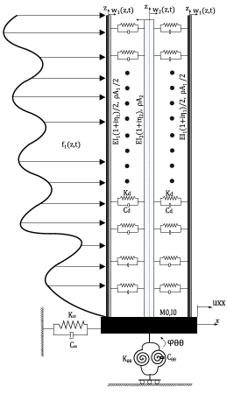Dynamics of high-rise buildings
Nowadays buildings are becoming more slender and lighter. Those characteristics make buildings more sensitive to dynamic effects such as wind or earthquakes. The dynamic behaviour of a building depends on the stiffness, mass and damping. Whilst mass and stiffness are quantifiable, damping due to its complex nature is very difficult to identify and quantify. At present there are empirical formulas to predict the total damping of a building. However, those formulas give an unacceptable scatter in damping values. The total damping comprises internal material damping, damping due to the energy loss in the structural joints and the energy dissipation by soil-structure interaction. In order to improve the damping accuracy, the different damping mechanisms should be identified and related to the several structural parameters.
Research focus
- Distinguishing the total damping into the damping contributions from the main building components (bearing structure, foundation, non-structural elements, etc.).
- Gaining knowledge regarding the different damping mechanisms and relate them properly to the structural parameters.
- Studying the effect of the amplitude dependence damping during building vibrations.
- The development of a measurement technique is required to feed and validate the model(s).
Industry partners
Contact

